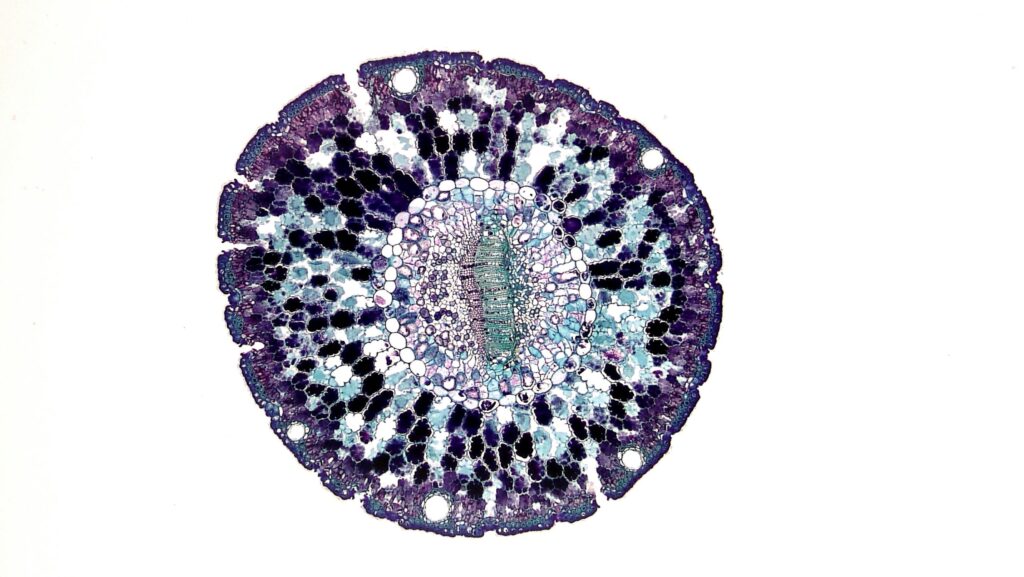GHK is a naturally occurring tripeptide composed of glycine, histidine, and lysine. It is present in plasma, saliva, and urine in mammalian models. However, its concentration declines over time. While most research has focused on its copper-bound form (GHK-Cu), increasing attention is being directed toward the unbound GHK peptide itself, due to its intrinsic signaling roles and ability to modulate cellular pathways independently of copper binding.
GHK’s Molecular Profile and Mechanistic Potential
Although GHK is believed to bind copper under physiological conditions readily, the unbound peptide may itself function as a signaling molecule. Investigations suggest that GHK basic may interact with cell surface receptors through its lysine residue, particularly at physiological pH, thereby modifying gene expression or supporting extracellular matrix dynamics. It has been hypothesized that GHK basic might regulate gene networks even without copper. In genomic screening experiments, GHK (unbound) seems to have supported the expression of thousands of genes, suggesting a role in resetting gene expression toward more functional patterns.
Studies suggest that GHK basic might support the balance of metalloproteinase and anti-protease activity. Some research suggests that unbound GHK may modulate extracellular matrix turnover by promoting both synthesis and breakdown in a coordinated manner, even in the absence of copper chelation. This dual regulation may support a remodeling state rather than unrestrained proliferation.
Dermal Cell Research Models and Keratinocyte / Fibroblast Systems
Most research has involved cell culture systems of dermal fibroblasts and keratinocytes to characterize the peptide’s activities. Investigations suggest that in cultured dermal fibroblasts, GHK-Cu may stimulate the biosynthesis of collagen precursors, dermatan sulfate, chondroitin sulfate, and decorin, indicating that even in the absence of copper, it may encourage matrix assembly.
In fibroblast culture, GHK is thought to restore replicative vitality following radiation exposure, increasing growth factors such as bFGF and related trophic signals to levels comparable to or exceeding those of unexposed controls. Research indicates that this process may involve the modulation of gene networks associated with DNA repair, extracellular matrix production, and cellular proliferation.
Within keratinocyte models, GHK basic appears to increase the expression of stem-cell markers—such as integrins and p63—in basal cell populations, suggesting a potential to maintain or reinstate stem-like phenotypes in epidermal cellular systems.
Modulation of Gene Networks in Cellular Contexts
One of the most intriguing research avenues is the gene regulatory potential of the basic peptide. The interaction with transcriptomic platforms, including Connectivity Map (CMap) datasets, suggests that GHK (not necessarily bound to copper) may modulate the expression of over 3,900 genes in cultured cells. This broad transcriptional reach suggests that the peptide may regulate genomic tone toward better expression patterns.
It has been theorized that such gene modulation may underlie the observed support for extracellular matrix gene families, growth factor expression, antioxidant enzyme activity, and suppression of inflammatory mediators, even in non-animal, cell-based systems.
Antioxidant and Anti‑Inflammatory Potential in Dermal Cell Culture
Research indicates that in keratinocyte cultures exposed to ultraviolet radiation or oxidative stressors, GHK-Cu (though less studied than the copper form) may exhibit protective properties. Investigations suggest that GHK may quench reactive carbonyl species such as 4‑hydroxynonenal, acrolein, and malondialdehyde—compounds that accumulate in stressed dermal cells—and thereby may reduce cellular damage signals.
Investigations purport that the suppression of pro-inflammatory cytokine gene expression—such as IL-6 secretion—in dermal fibroblasts and sebocyte systems under stress conditions, when exposed to GHK. Although often interpreted in the context of GHK-Cu, these outcomes may in part reflect intrinsic peptide signaling from GHK itself.
Extracellular Matrix Remodeling and Collagen Research
Cellular assays suggest that GHK basic may coordinate collagen synthesis and extracellular matrix turnover via modulation of metalloproteinases and their inhibitors (TIMP‑1, TIMP‑2). Findings imply that the peptide may promote the production of structural matrix proteins while also regulating proteolytic enzymes to maintain balance, thereby preventing both excessive matrix breakdown and the undue accumulation of damaged proteins.
Investigations propose that GHK basic’s potential to stimulate decorin—a small yet critical proteoglycan involved in collagen organization—may contribute to regenerative matrix architecture in cultured dermal cell systems.
Conclusions
GHK basic, the unbound tripeptide gly‑his‑lys, represents a compelling molecule for academic research within dermal cell science. Even without copper binding, the peptide has been hypothesized to support gene regulation, extracellular matrix remodeling, keratinocyte stemness, and responses to oxidative stress. Research indicates that GHK basic might coordinate collagen and proteoglycan synthesis, support vitality in irradiated cells, and modulate inflammatory mediators.
By leveraging dermal fibroblast and keratinocyte systems, investigators might explore the peptide’s transcriptional implications, its potential for barrier reconstruction, and its matrix regulatory potential. Emerging hypotheses around receptor engagement, gene resetting, and protease balance invite deeper mechanistic investigation. GHK basic has been theorized to offer a versatile platform for mapping cellular repair and regeneration pathways in dermal cell models, without considering exposure or experimental implications, focusing purely on research and mechanistic domains. Click here to find the best research materials about this peptide.
References
[i] Pickart, L., Vasquez‑Soltero, J. M., & Margolina, A. (2015). GHK peptide as a natural modulator of multiple cellular pathways in skin regeneration. BioMed Research International, 2015, 648108.
[ii] Maquart, F. X., Bellon, G., Gillery, P., Wegrowski, Y., & Borel, J. P. (1988). Stimulation of collagen synthesis in fibroblast cultures by the tripeptide‑copper complex glycyl‑L‑histidyl‑L‑lysine‑Cu²⁺. FEBS Letters, 238(2), 343–346.
[iii] McCormack, M. C., et al. (2001). Effects of copper tripeptide on growth and expression of growth factors by normal and irradiated fibroblasts. Archives of Facial Plastic Surgery, 7(1), 27–35.
[iv] Pickart, L., & Margolina, A. (2018). Regenerative and protective actions of the GHK‑Cu peptide in light of the new gene data. International Journal of Molecular Sciences, 19(7), 1987.
[v] Pickart, L. (1999). The human tripeptide GHK and tissue remodeling. Journal of Biomaterials Science, Polymer Edition, 10(1), 21–37.



 Johnford Hillarrio is a health and fitness advocate contributing to My Healthy Living and Strategies, where he shares his passion for promoting physical and mental well-being. With a background in exercise science and nutrition, Johnford focuses on helping readers find sustainable ways to improve their overall health. His content offers actionable tips on fitness routines, healthy eating habits, and maintaining mental clarity.
Johnford Hillarrio is a health and fitness advocate contributing to My Healthy Living and Strategies, where he shares his passion for promoting physical and mental well-being. With a background in exercise science and nutrition, Johnford focuses on helping readers find sustainable ways to improve their overall health. His content offers actionable tips on fitness routines, healthy eating habits, and maintaining mental clarity.